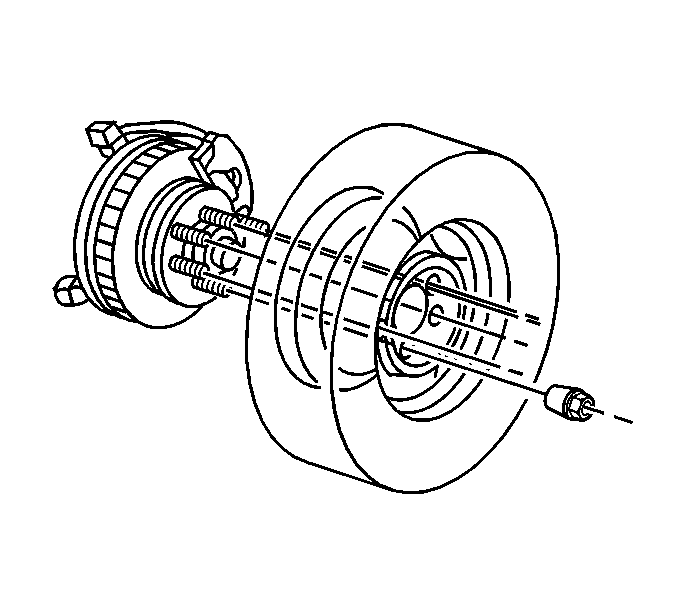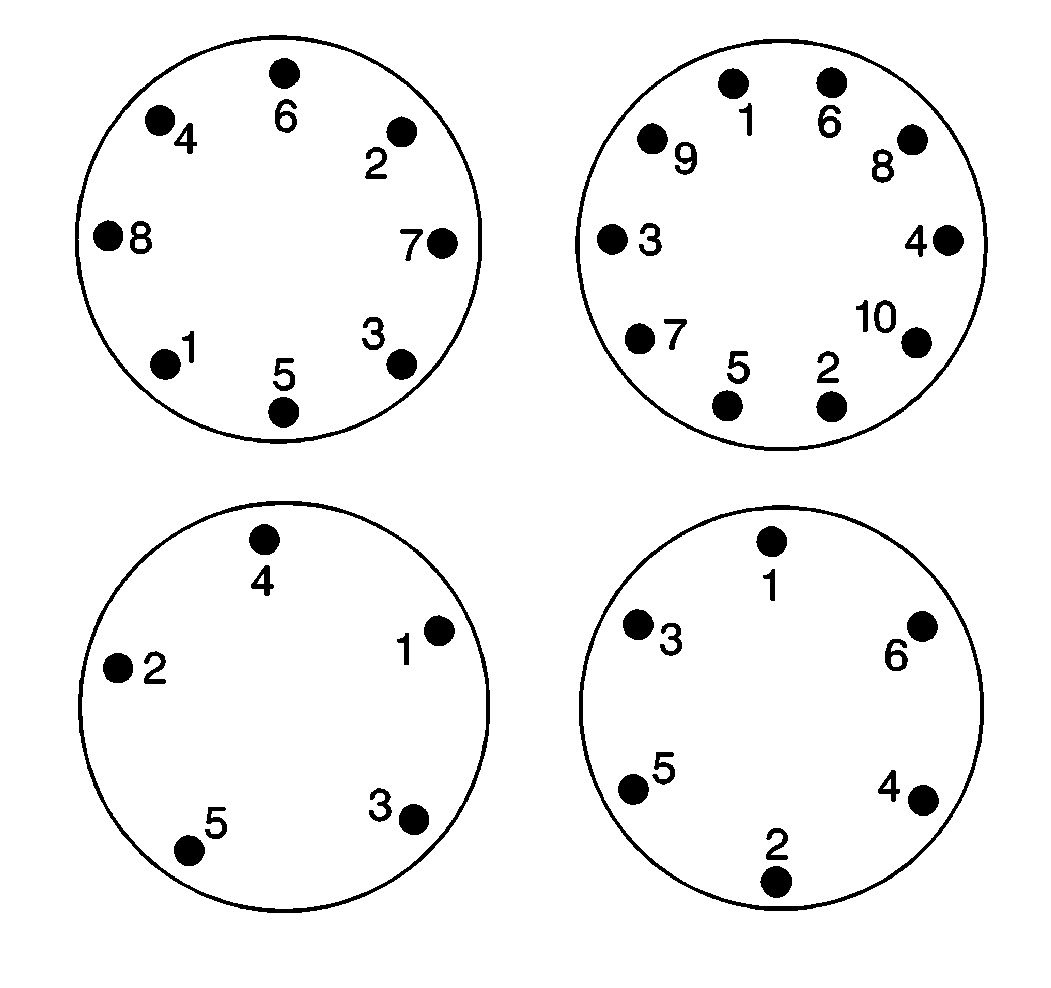Tools Required
J 39544-KIT Complete Torque Socket Set-10 Pieces
Caution: If penetrating oil gets on the vertical surfaces between the wheel and the rotor or drum it could cause the wheel to work loose as the vehicle is driven, resulting in loss of control and an injury accident.
Notice: Never use heat to loosen a tight wheel. It can shorten the life of the wheel, studs, or hub and bearing assemblies. Wheel nuts must be tightened in sequence and to the specified torque to avoid bending the wheel or rotor.
Notice: Improperly tightened wheel bolts or nuts can lead to brake pulsation and rotor damage. In order to avoid expensive brake repairs, evenly tighten the wheel bolts or nuts to the proper torque specification.
- Tighten all wheel nuts on the affected wheel.
- Loosen each wheel nut 2 turns.
- Rock the vehicle from side to side in order to loosen the wheel. If this does not loosen the wheel, rock the vehicle front to back applying quick hard jabs to the brake pedal to loosen the wheel.
- Repeat this procedure if the wheel does not break free.
Removal Procedure
- Raise the vehicle. Support the vehicle with suitable safety stands. Refer to Lifting and Jacking the Vehicle in General Information.
- Remove the wheel nuts from the tire and wheel assembly.
- Mark the location of the tire and wheel assembly to the hub assembly.
- Remove the tire and wheel assembly from the vehicle.
- Clean the wheel nuts, studs and the wheel and rotor mounting surfaces.

Installation Procedure
Caution: Before installing the wheels, remove any buildup of corrosion on the wheel mounting surface and brake drum or disc mounting surface by scraping and wire brushing. Installing wheels with poor metal-to-metal contact at the mounting surfaces can cause wheel nuts to loosen. This can cause a wheel to come off when the vehicle is moving, causing loss of control and possibly personal injury.
Notice: A torque wrench or J 39544 must be used to ensure that wheel nuts are tightened to specification. Never use lubricants or penetrating fluids on wheel stud, nuts, or mounting surfaces, as this can raise the actual torque on the nut without a corresponding torque reading on the torque wrench. Wheel nuts, studs, and mounting surfaces must be clean and dry. Failure to follow these instructions could result in wheel, nut, and/or stud damage.
- Install the tire and wheel assembly. Align the locating mark of the tire and wheel to the hub.
- Install the wheel nuts using J 39544-KIT .
- Remove the safety stands and lower the vehicle.


Notice: Use the correct fastener in the correct location. Replacement fasteners must be the correct part number for that application. Fasteners requiring replacement or fasteners requiring the use of thread locking compound or sealant are identified in the service procedure. Do not use paints, lubricants, or corrosion inhibitors on fasteners or fastener joint surfaces unless specified. These coatings affect fastener torque and joint clamping force and may damage the fastener. Use the correct tightening sequence and specifications when installing fasteners in order to avoid damage to parts and systems.
Important: Tighten the nuts evenly and alternately in order to avoid excessive runout.
Tighten
Tighten the nuts in a criss/cross pattern to 140 N·m (100 lb ft).
